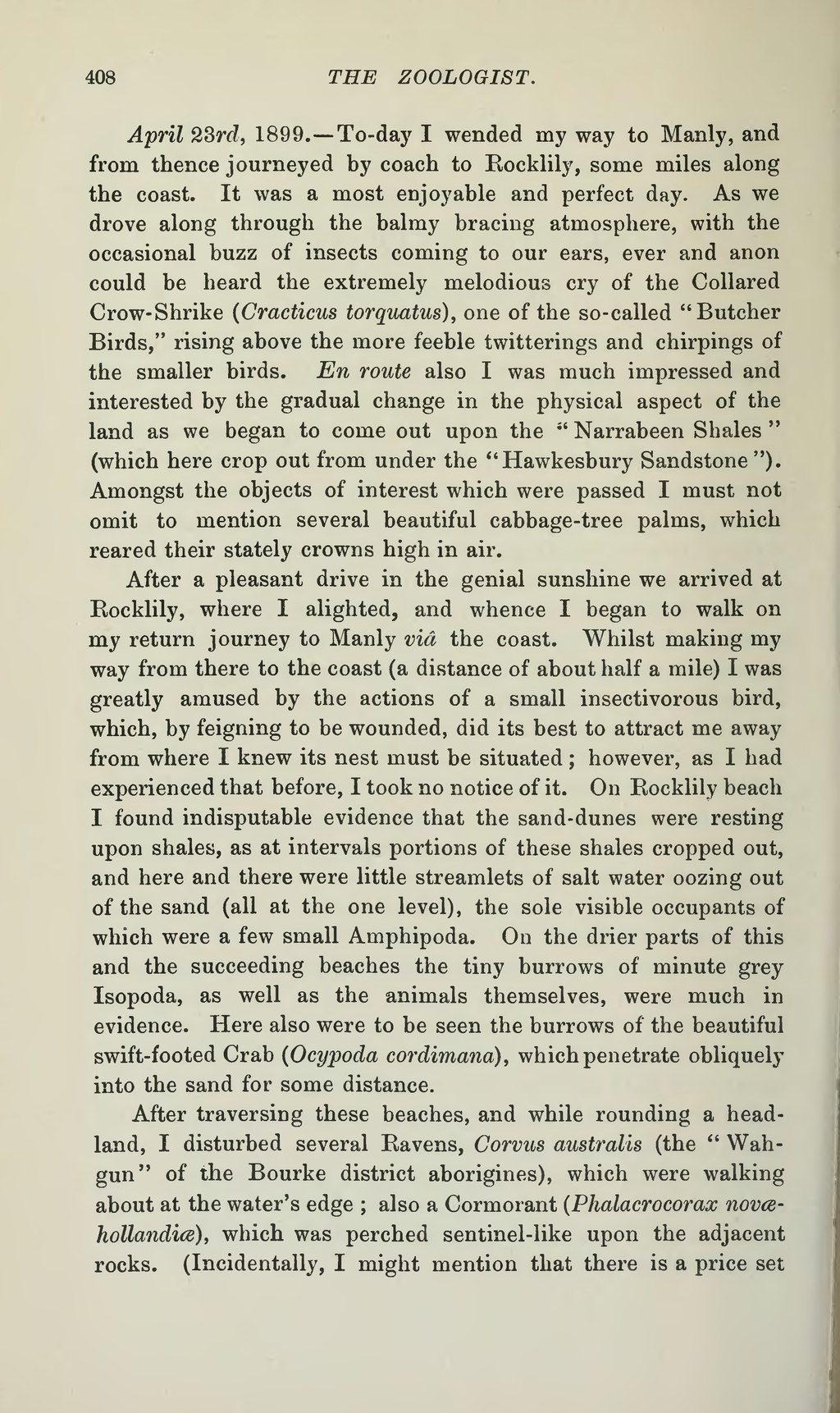April 23rd, 1899.—To-day I wended my way to Manly, and from thence journeyed by coach to Rocklily, some miles along the coast. It was a most enjoyable and perfect day. As we drove along through the balmy bracing atmosphere, with the occasional buzz of insects coming to our ears, ever and anon could be heard the extremely melodious cry of the Collared Crow-Shrike (Cracticus torquatus), one of the so-called "Butcher Birds," rising above the more feeble twitterings and chirpings of the smaller birds. En route also I was much impressed and interested by the gradual change in the physical aspect of the land as we began to come out upon the "Narrabeen Shales" (which here crop out from under the "Hawkesbury Sandstone"). Amongst the objects of interest which were passed I must not omit to mention several beautiful cabbage-tree palms, which reared their stately crowns high in air.
After a pleasant drive in the genial sunshine we arrived at Rocklily, where I alighted, and whence I began to walk on my return journey to Manly viâ the coast. Whilst making my way from there to the coast (a distance of about half a mile) I was greatly amused by the actions of a small insectivorous bird, which, by feigning to be wounded, did its best to attract me away from where I knew its nest must be situated; however, as I had experienced that before, I took no notice of it. On Rocklily beach I found indisputable evidence that the sand-dunes were resting upon shales, as at intervals portions of these shales cropped out, and here and there were little streamlets of salt water oozing out of the sand (all at the one level), the sole visible occupants of which were a few small Amphipoda. On the drier parts of this and the succeeding beaches the tiny burrows of minute grey Isopoda, as well as the animals themselves, were much in evidence. Here also were to be seen the burrows of the beautiful swift-footed Crab (Ocypoda cordimana), which penetrate obliquely into the sand for some distance.
After traversing these beaches, and while rounding a headland, I disturbed several Ravens, Corvus australis (the "Wahgun" of the Bourke district aborigines), which were walking about at the water's edge; also a Cormorant (Phalacrocorax novæ-hollandiæ), which was perched sentinel-like upon the adjacent rocks. (Incidentally, I might mention that there is a price set
